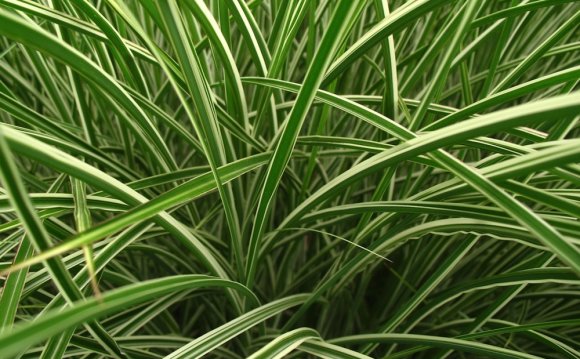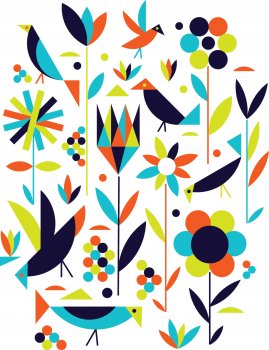
 Illustration: Greg Mably
Illustration: Greg Mably
Looking to spruce up your yard this spring? Try growing more native plants – plants that naturally occur in the area where you live. Gardening with native plants has many benefits: They’re beautiful, they’re already adapted to your precipitation and soil conditions, and they don’t need artificial fertilizers or pesticides. Of course the biggest benefit might be that native plants are great for birds and other wildlife.
Native plants provide nectar for hummingbirds, butterflies, and bees. They provide nourishing seeds and irresistible fruits for your feathered neighbors, and they offer places to nest and shelter from harm. They’re also a critical part of the food chain—native insects evolved to feed on native plants, and by and large, backyard birds raise their young on insects, explains Douglas Tallamy, the author of Bringing Nature Home. Take the Carolina Chickadee: A single clutch of four to six chicks will gobble up more than 9, 000 caterpillars in the 16 days between when they hatch and when they leave the nest. So thriving insects mean thriving birds.
The key is to pick the right plants for your area. Here are 10 great plants to get you thinking about the possibilities—but remember, there are thousands of native plants out there. Search Audubon's native plants database to create a list of plants native to your area and get connected to local native plant resources. You'll also find even more resources listed further down the page.
Purple Coneflowers (Echinacea spp.)
Coneflowers are a tried-and-true garden staple, and wildlife are drawn to them, too.
Birds that love them: These beautiful blooms attract butterflies and other pollinators during the summer and provide seeds for goldfinches and other birds in the fall.
Where they’re native: Some of these species, like Echinacea purpurea and Echinacea pallida, are great native plants to grow in the plains states. Coneflowers grow well most places, so check for the species native to your region.
Sunflowers (Helianthus spp.)
Sunflowers may signify loyalty and longevity for people, but they mean food for many birds.
Birds that love them: Birds often use the sunflower seeds to fuel their long migrations.
Where they’re native: Helianthus ciliaris in the Southwest and central United States and Helianthus angustifolius in the eastern United States produce seeds in bulk.
Milkweed (Asclepias spp.)
Milkweed is best known for hosting monarch butterfly caterpillars, but they attract loads of insects that are great for birds, too. Bonus: the flowers are gorgeous.
Birds that love them: Some birds, like the American Goldfinch, use the fiber from the milkweed to spin nests for its chicks. Goldfinches, and other birds, also use the downy part of the seed to line their nests.















